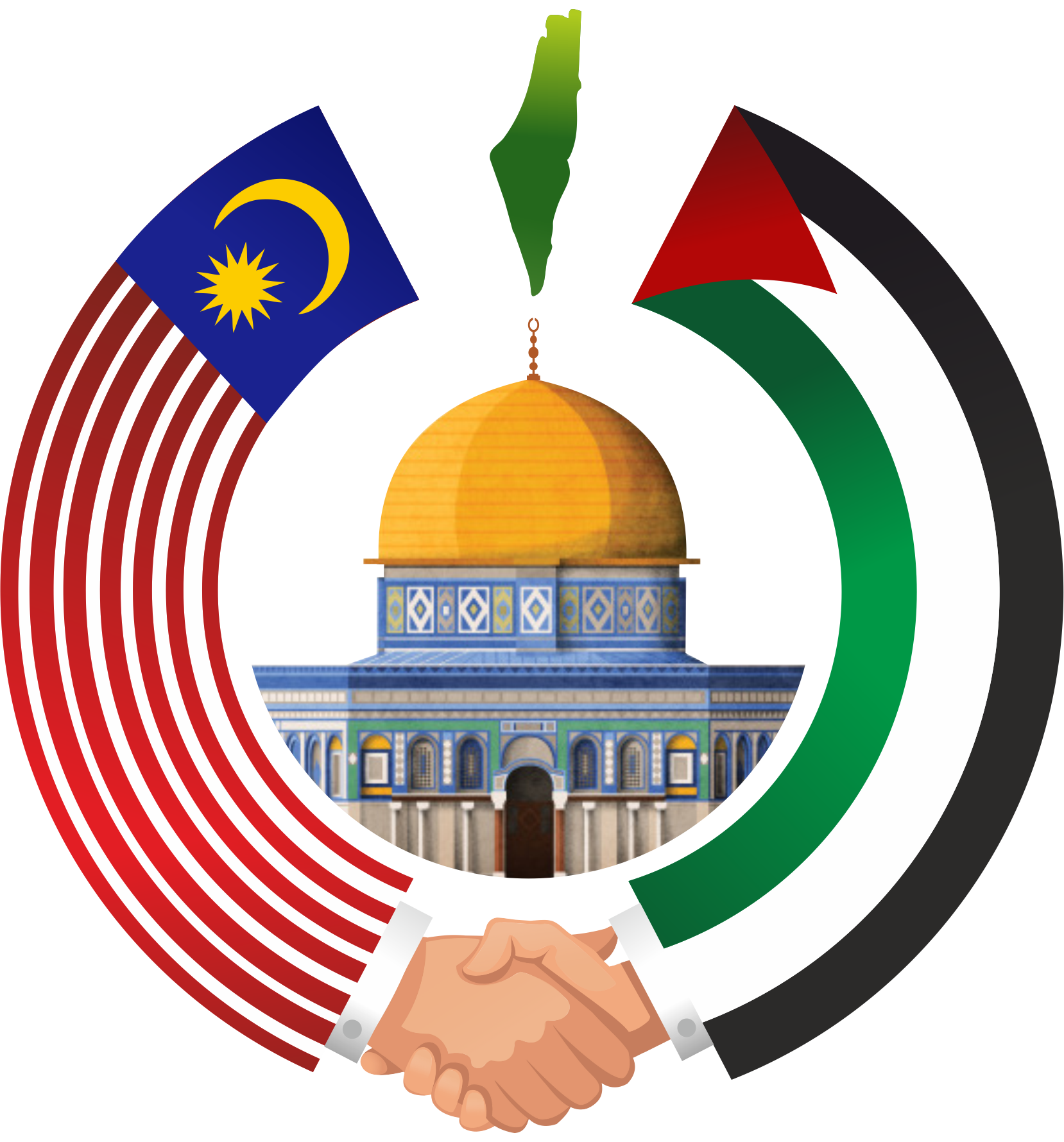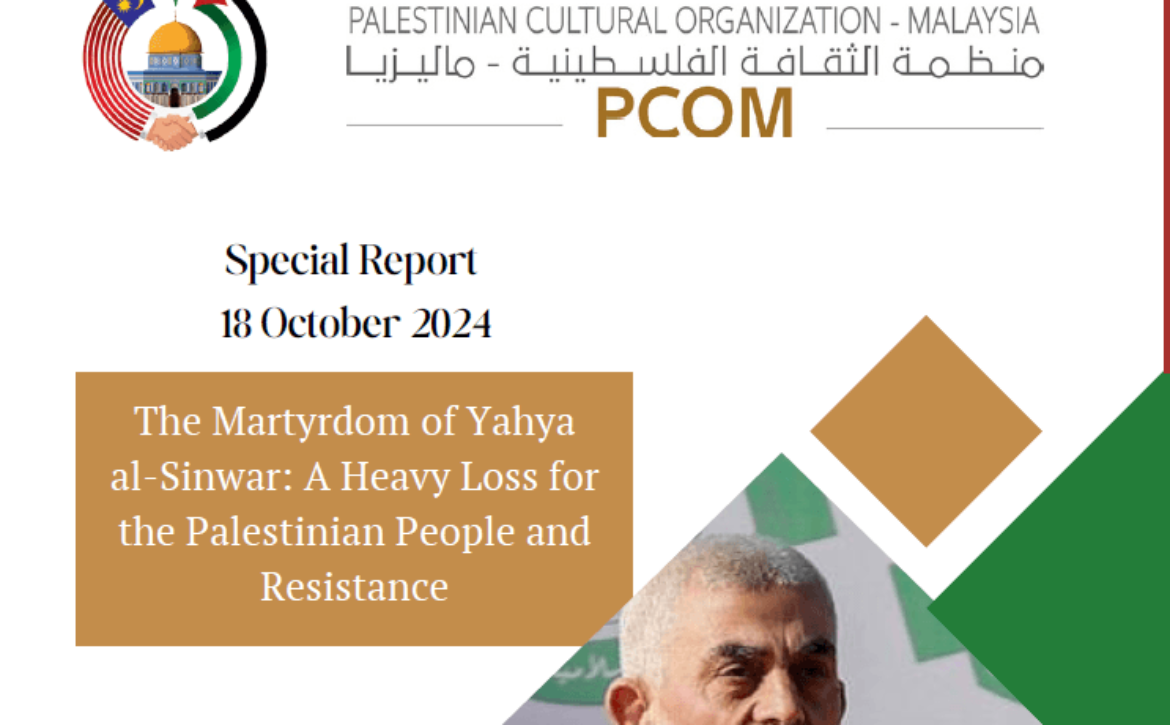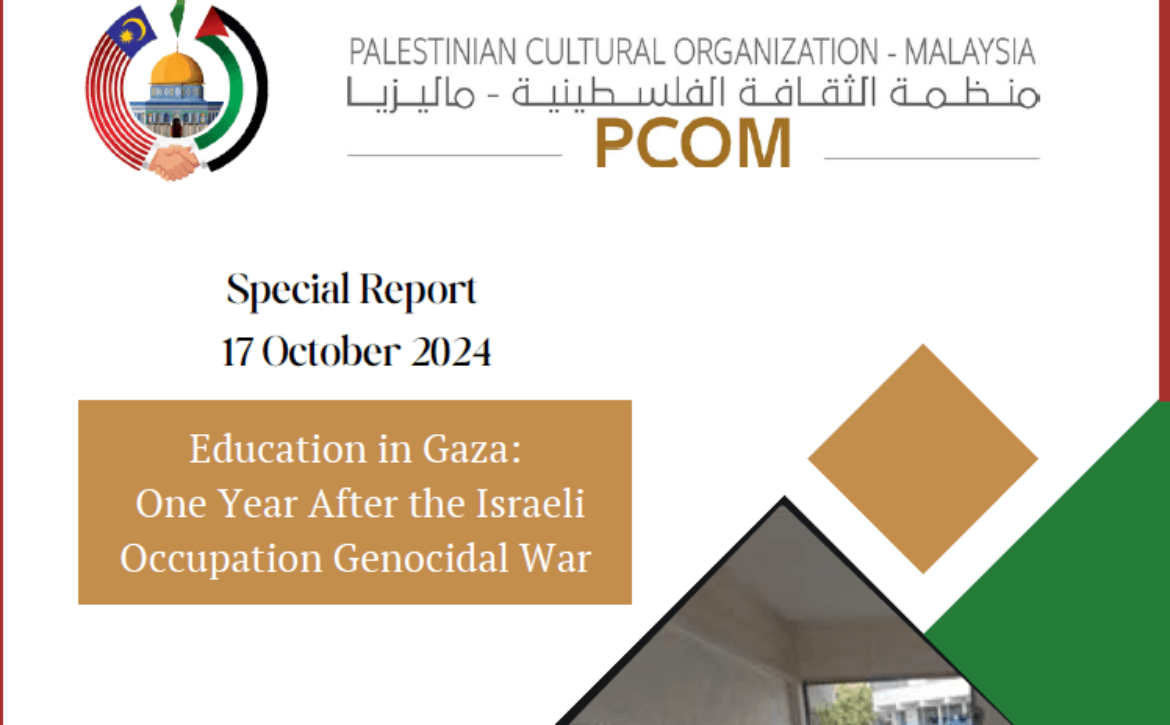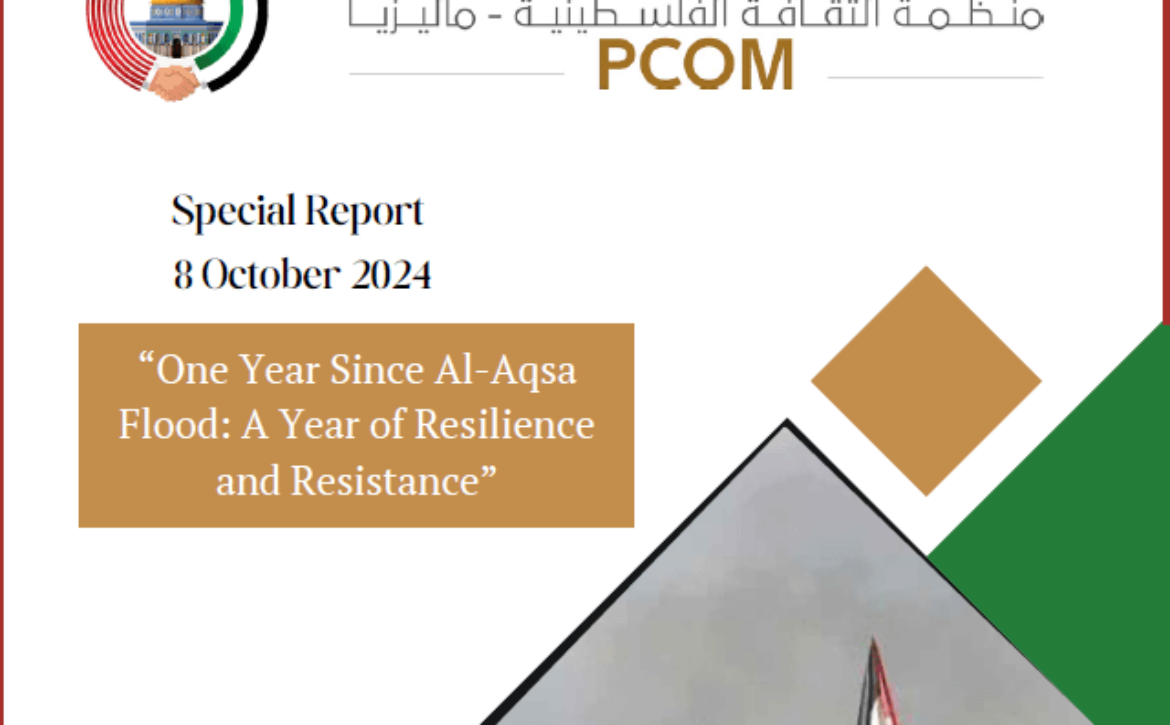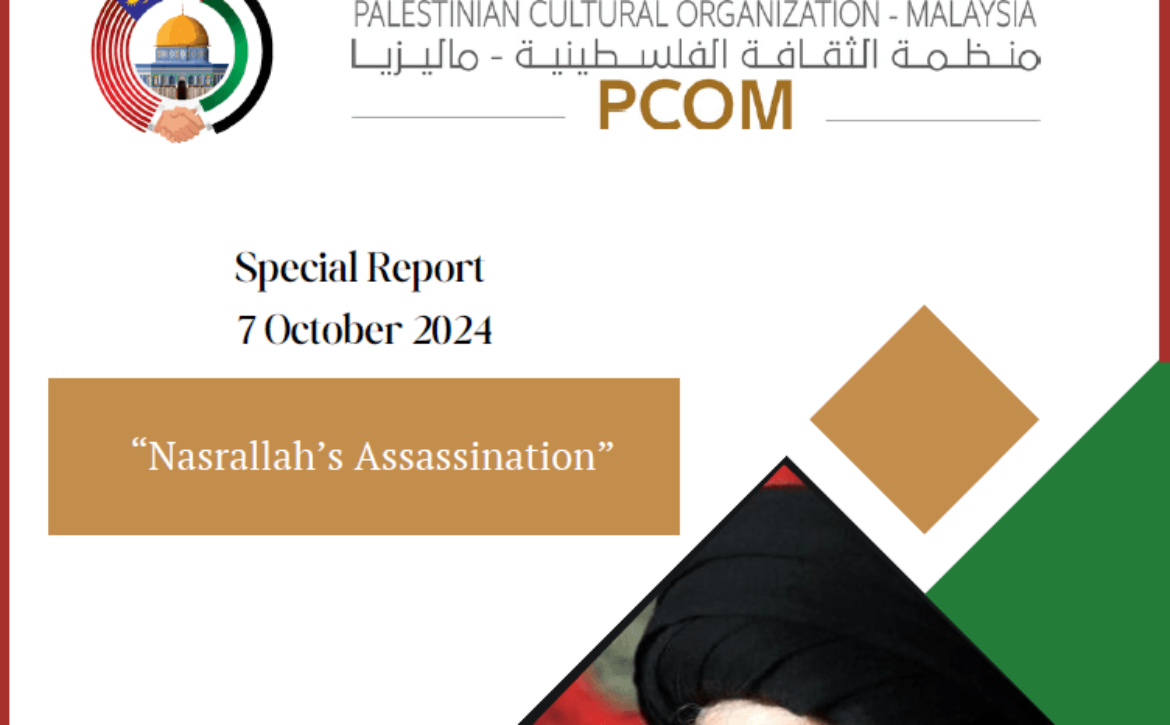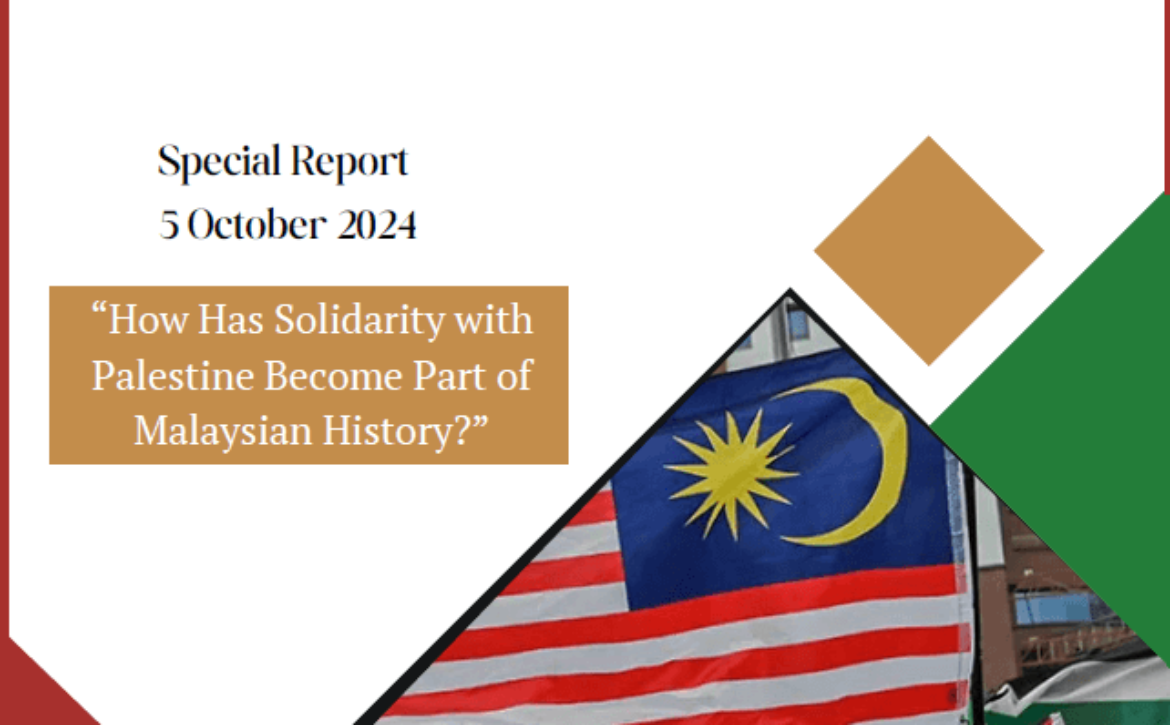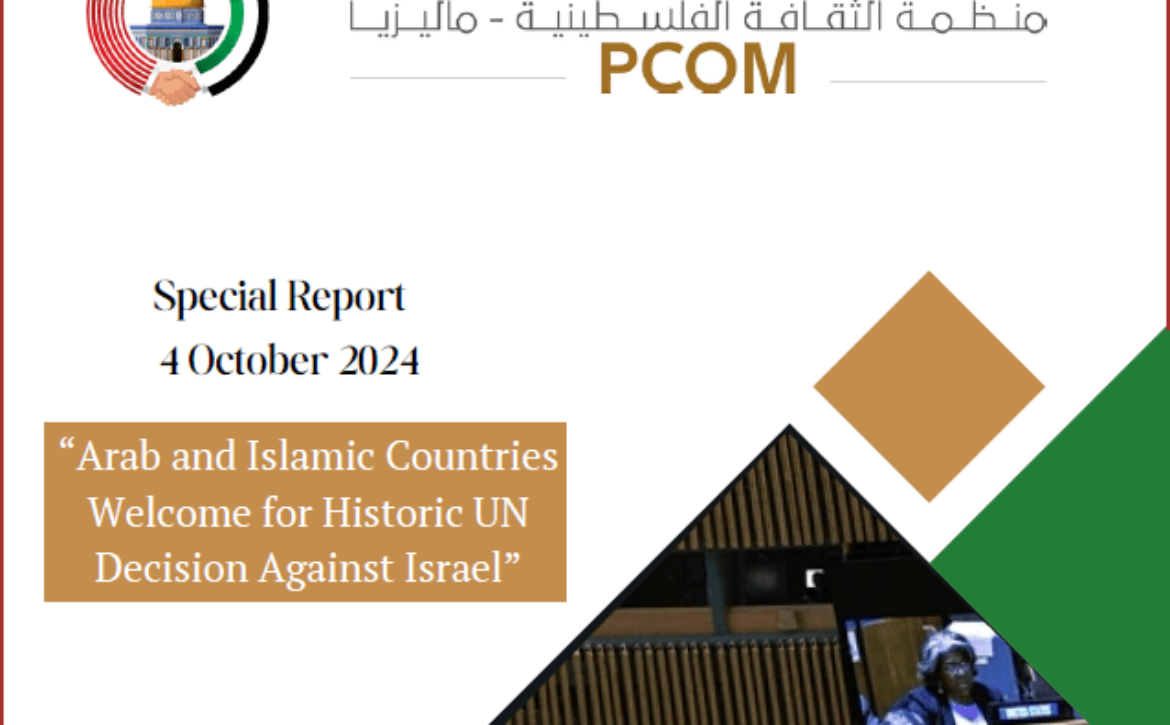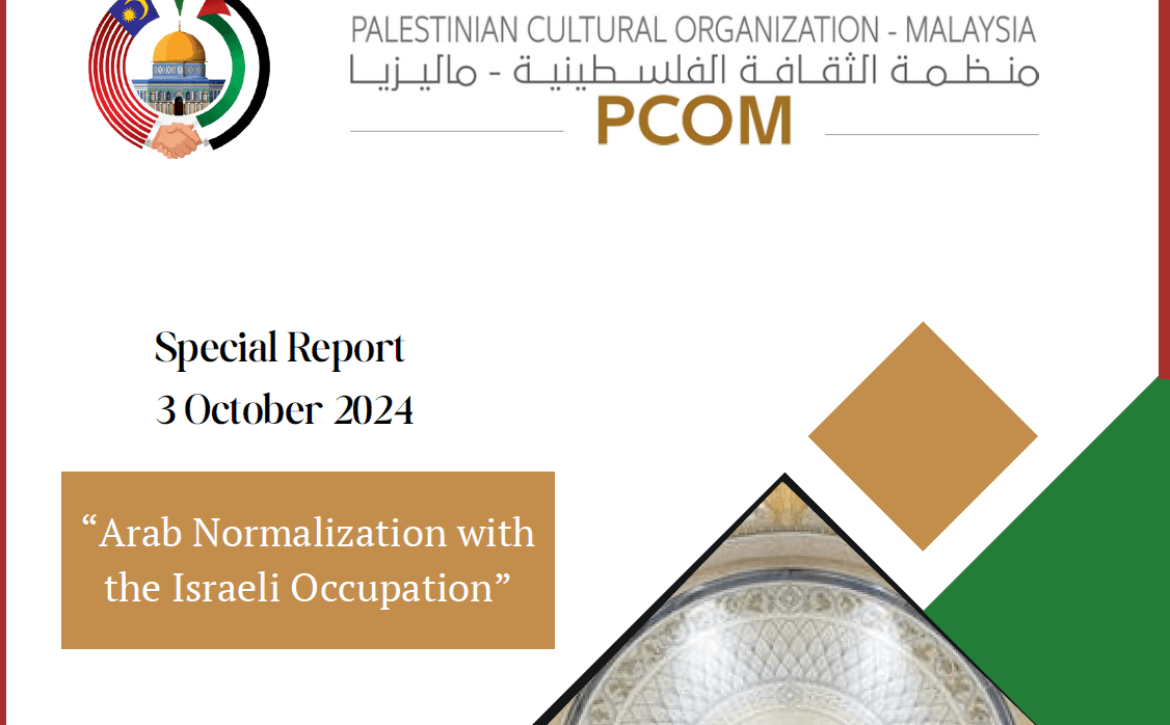Introduction
The “Al-Aqsa Flood” operation, launched by the Palestinian resistance in the Gaza Strip against the Israeli occupation in the early hours of Saturday, October 7, 2023, marked a significant turning point in the Palestinian struggle for freedom. This operation, which involved ground, naval, and aerial attacks, as well as infiltrations by resistance fighters into several settlements around Gaza, was announced by Muhammad Deif, the Chief of Staff of the Izz al-Din al-Qassam Brigades, the military wing of the Islamic Resistance Movement (Hamas). It was considered the largest operation on Israel in decades.
Palestinian fighters infiltrated the settlements around Gaza through the border fence, supported by naval commandos and paratroopers from the al-Qassam Brigades. In a pre-recorded audio message, Deif declared, “We announce the beginning of the Al-Aqsa Flood operation with an initial strike targeting enemy military sites, airports, and fortifications.” He highlighted the operation’s magnitude, stating that over 5,000 rockets and shells were launched within the first 20 minutes.
Deif characterized October 7 as “the day of the great battle to end the last occupation on Earth,” calling on Palestinian people in the West Bank and within 1948 territories to join the fight using all available means, including firearms, bladed weapons, and through protests and sit-ins. He also urged Arab and Muslim populations to support the Palestinian cause through demonstrations and other forms of grassroots pressure.
The name “Al-Aqsa Flood” holds deep significance as it signifies a response to ongoing Israeli violations of the Al-Aqsa Mosque and other Islamic holy sites in occupied Al-Quds. In the initial hours of the operation, hundreds of Israeli soldiers and settlers were reported killed, with over 100 captured or missing. The operation resulted in the closure of local airports in central and southern Israel and the cancellation of numerous flights to Ben Gurion Airport.
October 7 has become a pivotal moment in Palestinian history, emphasizing that despite military and economic isolation, Palestinian people refuse to surrender. It challenges the global community to recognize the Palestinian issue as rooted in a deeper historical and political reality—the right to resist colonial oppression.
The one-year anniversary of the “Al-Aqsa Flood” operation serves as more than just a remembrance; it is an opportunity to reflect on the ongoing struggle, the sacrifices made, and the resilience that has sustained the Palestinian cause for over 75 years. This commemoration honors those who lost their lives and acknowledges the persistent suffering and defiance of a people enduring occupation, dispossession, and violence for generations.
On October 7, 2023, Izz al-Din al-Qassam Brigades, the military wing of the Islamic Resistance Movement (Hamas), launched the operation known as “Al-Aqsa Flood.” This operation marked a watershed moment in the ongoing struggle for liberation. The operation unfolded with a level of audacity and planning, demonstrating the determination of the Palestinian people to reclaim their rights and confront decades of occupation. Major moments from the operation include:
Border Breaches: One of the most defining moments of that day was the breaching of the heavily fortified barriers surrounding Gaza. Palestinian fighters, demonstrating remarkable courage and resilience, penetrated defenses that had long been perceived as impenetrable. Qassam fighters successfully killed and captured Israeli settlers, inflicting significant casualties and wounding many more.
Military Confrontations: In the hours that followed the initial incursions, intense confrontations erupted across various Israeli settlements and military installations. Palestinian fighters engaged Israeli occupation forces in direct combat, capturing military posts and asserting control over key areas.
Mass Mobilization: As the operation unfolded, the streets of Gaza transformed into scenes of solidarity and unity. Civilians, aware of the risks involved, stood shoulder to shoulder with the fighters, displaying unwavering support for the resistance. The broader Palestinian population recognized this moment as an unprecedented opportunity to challenge the occupation on a scale not seen in years. Demonstrations erupted, and the collective spirit of defiance permeated every corner of Gaza.
The response from Israel unfolded with devastating consequences. In a bid to reassert control, Israel launched massive airstrikes that destroyed entire neighbourhoods. This wave of aggression was not merely a military reaction but an embodiment of a genocidal war, claiming the lives of hundreds of thousands of Palestinians. The toll included countless individuals killed, missing, and wounded, contributing to a humanitarian crisis of unprecedented scale.
Why Al-Aqsa Flood?
Hamas Movement clarified in the document titled “This is Our Narrative… Why Al-Aqsa Flood” that the Battle of Al-Aqsa Flood represents the Palestinian struggle against occupation and colonialism, a fight rooted in a long history of oppression. This struggle began long before October 7, 2023, with over a century of suffering, including 30 years of British colonial rule and 75 years of Zionist occupation.
In 1918, Palestinians owned 98.5% of the land and made up 92% of the population, a stark contrast to the Jewish immigrants arriving during early settlement migrations. Despite the British colonial regime facilitating Jewish immigration, by 1948, Zionists controlled only 6% of the land and accounted for 31.7% of the population. This imbalance led to widespread ethnic cleansing and massacres by Zionist gangs, resulting in the expulsion of over 57% of Palestinians and the destruction of more than 500 villages, paving the way for the establishment of the Zionist state.
The 1967 occupation of the remaining Palestinian territories further deepened the plight of the people. For over 17 years, the Gaza Strip has endured a suffocating siege, effectively transforming it into the world’s largest open-air prison. Throughout the decades, Palestinian people have faced relentless oppression, including apartheid policies, systemic violence, and military aggression, with Gaza experiencing five devastating aggressions initiated by the Israeli occupation. Peaceful protests, such as the “March of Return,” resulted in the deaths of over 360 Palestinian people and injuries to more than 19,000 others, including around 5,000 children.
Statistical studies reveal that from 2000 to September 2023, Israeli occupation forces killed 11,299 Palestinian people and injured 156,768, predominantly civilians. Unfortunately, the United States and its allies have largely ignored Palestinian suffering, focusing instead on Israeli casualties following the events of October 7, 2023. The U.S. continued to provide material support and cover for the Israeli government’s brutal actions against civilians in Gaza, actions that are condemned worldwide.
Numerous human rights organizations, including Amnesty International and Human Rights Watch, have documented Israeli violations, yet accountability remains elusive. The U.S. has historically treated Israel as a “state above the law,” enabling continued occupation and violence against the Palestinian people. Despite over 900 U.N. resolutions favoring Palestinian people over the past 75 years, Israel has defied them, with U.S. vetoes preventing any meaningful accountability.
Even peace processes, such as the Oslo Accords, have failed to establish a Palestinian state, as Israel has systematically destroyed any prospects for sovereignty through rampant settlement expansion. As recently as September 2023, Israeli Prime Minister Benjamin Netanyahu displayed a map encompassing all historical Palestine, reflecting Israel’s refusal to recognize Palestinian rights. Given this context of ongoing suffering and oppression, the world must reconsider its expectations of the Palestinian people.
In the face of ongoing threats to Al-Aqsa Mosque, increased settler violence, and the dire humanitarian situation in Gaza, the question arises: what options are left for Palestinians? After 75 years of occupation, suffering, and failed peace processes, was it reasonable for the world to expect the Palestinians to continue waiting for solutions from international institutions that have proven ineffective? Thus, the Al-Aqsa Flood operation on October 7, 2023, was a necessary response to Israeli occupation plans aimed at erasing the Palestinian cause, seizing land, and further entrenching occupation. It symbolizes the Palestinian people’s resolve to reclaim their rights and aspirations for freedom and independence, as is the right of any oppressed population.
The document further clarifies that Hamas’s objectives in the Al-Aqsa Flood operation were specific: it targeted Israeli occupation military sites and aimed to capture enemy soldiers in order to negotiate the release of thousands of Palestinian prisoners. This focus on military targets was a response to the constant attacks and violence inflicted on Gaza. Hamas emphasizes its commitment to avoiding civilian casualties, underscoring that any unintended harm is a regrettable consequence of defending against a powerful and violent occupation.
Historically, Hamas has upheld principles aimed at safeguarding civilian lives, yet the chaotic circumstances of the conflict sometimes lead to unintended outcomes. The organization has actively sought to secure the release of civilian hostages while addressing the long-standing injustices faced by Palestinians in Israeli prisons. Allegations regarding the targeting of civilians by Hamas are unfounded and stem from a distorted narrative that seeks to justify Israeli aggression.
Evidence from that day indicates that many civilian casualties among Israelis resulted from confusion and misfires by Israeli police and military forces. Assertions of specific atrocities, such as the killing of infants or acts of sexual violence against Israeli women, have been disproven by independent investigations. This narrative, propagated largely through Israeli media, has been effectively countered by emerging evidence, further discrediting the justifications for the violence inflicted upon Gaza.
Palestinian Cause Resurgent
The “Al-Aqsa Flood” has brought the Palestinian cause back to the forefront, exposing a truth that the American and Western media have covered up for over seventy years. This truth is that Palestine is the issue of a people whose rights have been usurped, and they will continue to demand these rights, no matter the setbacks and coercions. The racist brutality of Zionism and the United States, along with the destruction, starvation, and genocide they have inflicted, combined with the steadfastness of the citizens of Gaza, has begun to shift the narrative in favor of the resistance.
The remaining conscience among the new generations in the West has started to awaken to the nature and history of the conflict, as the name Palestine had been erased from their memory. Israel has long portrayed Hamas Movement, for the sake of obfuscation, as part of the “axis of evil,” labelling it as a terrorist organization. Throughout this time, the resistance has stood firm against the mightiest and most powerful state (the U.S.) and its regional arm, Israel. The events of October 7 stirred the status quo in the regional conflict, creating repercussions on multiple levels. It revealed that Zionism without America cannot endure for long against a people with a just cause.
The emergence of the changes we have witnessed on the international stage and in global arenas was unimaginable; who among us could have predicted that the peoples of the West—Germany, England, and all of Europe, as well as the United States—would rise up against their governments? These governments have supported this illegitimate entity, while the people have taken a courageous stand against the brutality of the Zionist enemy and their systems that collude in sin and aggression, urging them to refrain from endorsing the oppression, horrific killings, comprehensive destruction, and genocide.
We have seen Western media figures, celebrities from art, literature, and sports, as well as former politicians and diplomats, including some from Israel itself, criticize the actions of the war council and even Netanyahu. This has widened the gap between the war council and the people regarding their government. These global figures, standing with a just cause against the barbarism and savagery of this entity, have significantly contributed to fueling these international changes and the popular uprising in the streets of Europe and America.
Palestinian solidarity movements across the world were invigorated by Al-Aqsa Flood. Protests in capitals from New York to Kuala Lumpur demanded an end to the occupation and the siege. Advocacy for the Boycott, Divestment, and Sanctions (BDS) movement grew stronger, with increased calls for international institutions and corporations to divest from Israeli companies complicit in the occupation. The operation fuelled a sense of urgency among Palestinian supporters, as they recognized the importance of amplifying the voices of those living under occupation.
In contrast, Israel intensified its diplomatic lobbying efforts, particularly in Western capitals, framing the operation as an existential threat and positioning its military response as a legitimate defense. This narrative found traction in mainstream political spheres, but the grassroots movements, especially in the Global South, resonated more strongly with Palestinian voices, drawing parallels between Palestine’s struggle and anti-colonial movements worldwide.
The operation also brought into sharp focus the critical role that media and propaganda play in shaping global perceptions of the struggle. For years, the Palestinian people have struggled to tell their own stories in the face of an overwhelming Israeli propaganda machine that portrayed the resistance as terrorism and justified its military operations as acts of self-defence. Mainstream Western media outlets, heavily influenced by Israeli and pro-Israel narratives, often framed the operation through this lens, minimizing or entirely ignoring the context of occupation.
However, Al-Aqsa Flood also highlighted the growing power of Palestinian voices in countering these narratives, particularly through social media platforms. Young Palestinians, activists, and journalists used Twitter, Instagram, and other platforms to share their realities, posting firsthand accounts of life under siege, the destruction of their homes, and the loss of loved ones. These raw, unfiltered stories reached global audiences and created a groundswell of support that mainstream media could not easily ignore.
Yet, the challenges remained formidable. The occupation’s sophisticated media apparatus worked tirelessly to discredit Palestinian testimonies, painting any resistance as terrorism and using the operation to justify further crackdowns on Palestinian civil society. Social media companies often censored Palestinian content, either under pressure from Israeli lobbies or through algorithms that flagged pro-Palestinian posts as incitement or violence. Despite this, the resilience of Palestinian storytellers persisted, and their efforts to share the truth became an essential part of the broader resistance movement.
Al-Aqsa Flood also deepened the connections between Palestine and other global struggles for justice. Movements for Indigenous rights, anti-racism campaigns, and anti-colonial efforts in various parts of the world increasingly saw Palestine as a mirror of their own struggles. In many places, the Palestinian cause became a symbol of the broader fight against imperialism and state-sanctioned violence.
The parallels between apartheid South Africa and Israel’s occupation became more pronounced in international discourse, and solidarity with Palestine became a litmus test for global justice movements. The operation thus served as a catalyst for unifying different strands of global resistance, from Black Lives Matter in the United States to Indigenous movements in Latin America. For many of these groups, supporting Palestine was not just an act of solidarity, but a recognition of the interconnectedness of struggles against oppression and colonization.
The Human Cost and Struggles
The Al-Aqsa Flood operation, while a significant act of resistance, came at a heavy cost to the Palestinian people. The Israeli response was swift and brutal, aimed at breaking the spirit of Gaza’s defiance. Airstrikes levelled entire neighbourhoods, hospitals overflowed with casualties, and tens of thousands were displaced in a matter of days. For Palestinian people, this was not new. They had lived through such destruction many times before. The ongoing Zionist onslaught on all Palestine continues to bring devastation and suffering to the Palestinian people. The genocidal campaign targets civilians, particularly vulnerable groups such as children, women, and the elderly, causing irreparable loss and damage.
The death toll of Palestinian people has exceeded 41,638, with 75% of the casualties being children, women, and elderly people. Over 16,891 children and 11,458 women have been killed. Tragically, more than 10,000 Palestinian people remain trapped under the rubble of homes destroyed by Israeli occupation airstrikes, including 5,000 children. The number of injured has surpassed 96,460, with the majority being women and children. More than 3,652 massacres have been recorded, where entire families were killed in their homes during indiscriminate bombings. Over 17,000 children in Gaza have been orphaned.
In addition, 36 children in Gaza have died due to malnutrition and dehydration as famine spreads across the Strip. Since October 7, at least 54 Palestinian detainees have died in Israeli occupation prisons due to systematic torture and deliberate medical negligence. The material losses from the Israeli occupation aggression have surpassed $33 billion. Mass graves have been discovered across Gaza, with seven found in hospitals containing over 520 martyrs, most of them women and children. Among the victims are 471 Palestinian people killed in the bombing of Al-Ahli Baptist Hospital on October 17, along with civil defense teams, medical staff, and UNRWA workers targeted by the occupation forces.
The Israeli occupation army has forcibly disappeared over 5,000 Palestinian people from Gaza, detaining them in unknown locations. Many testimonies from released detainees have revealed that Palestinian people held in Israeli occupation jails endure all forms of torture, as well as deprivation of food and medical care.
The health sector in Gaza is under siege. Over 986 medical staff have been killed, and 717 others injured. More than 310 medical professionals, including hospital directors, were kidnapped while on duty. Thirty-four hospitals are completely out of service due to bombings and fuel shortages, while 80 healthcare centers have stopped providing services. 162 health facilities have been damaged, and 246 ambulances have been destroyed or severely damaged.
More than 25,000 injured Palestinian people are in urgent need of medical treatment abroad, but the ongoing blockade prevents their evacuation. Additionally, 3,500 children are at risk of death due to malnutrition. Hospitals are operating at 340% capacity, with severe shortages in medicines and medical supplies. Over 4,800 patients need daily care, and over 1,000 require urgent dialysis.
The Health Ministry reported that since March, 30 children have died due to malnutrition and dehydration, a direct result of Israel’s deliberate policy of starvation. Over 150,000 pregnant women are unable to access proper healthcare, while the treatment of 10,000 cancer patients has been disrupted. More than 350,000 patients with chronic illnesses are in need of medication that is no longer available. The spread of infectious diseases, including diarrhea and Hepatitis C, has affected over 1.7 million Palestinians due to unsanitary living conditions caused by the occupation’s relentless bombings.
More than 516,500 homes have been severely damaged, and 171,500 destroyed completely by Israeli bombs. Over 75% of all homes in Gaza have sustained damage. As a result, more than 2 million Palestinians are now displaced, with over one million living in overcrowded shelters in UNRWA schools.
The occupation has systematically targeted journalists and media offices in Gaza. So far, 174 journalists have been killed, 396 others have been critically injured, and at least two have been detained. More than 182 media offices have been damaged by the Israeli forces.
Israel has targeted Gaza’s vital infrastructure, with 489 schools and universities damaged, 123 of them completely destroyed. More than 201 government buildings and public facilities have been bombed. The occupation forces have destroyed 611 mosques and severely damaged 825 others, while three churches have also been hit. UNRWA facilities, industrial establishments, and agricultural lands have been obliterated, worsening the humanitarian disaster. The Israeli army has dropped over 85,000 tons of explosives, equivalent to more than twice the force of the atomic bomb used in Hiroshima.
The people of Gaza face famine, with over 600,000 people in the northern areas of the Strip under a complete siege, lacking access to food, water, and fuel. The humanitarian situation is dire, with people, especially children, living in constant fear and insecurity as bombs continue to fall.
The human cost of the Israeli genocidal war is not just measured in death tolls or destroyed buildings, but in the lives it has irrevocably changed. Each name lost in the bombardments tells a story of a life lived under occupation, a life full of dreams, hopes, and aspirations. These are not just numbers—they are fathers who once held their children, mothers who cooked for their families, and children who played in the streets of Gaza.
In marking the one-year anniversary of Al-Aqsa Flood, Palestinian people remember these lives as symbols of the ongoing struggle for freedom. Each displaced family, each life lost, each child orphaned is a testament to the fragility of existence under occupation.
The Israeli occupation launched its intensive and concentrated military campaign in the northern West Bank on August 28, targeting specifically the cities of Tubas, Tulkarem, Jenin, and refugee camps such as Nur Shams, Jenin, and al-Faraa. What is happening is merely another chapter in a series of military campaigns that have not ceased for years. Although these campaigns temporarily weakened the Palestinian resistance, it quickly re-emerged, stronger and more widespread, especially among Palestinian youth.
Arrests, raids, and killings in the West Bank did not stop before October 7, but they intensified after the “Al-Aqsa Flood” battle, leading to the martyrdom of more than 720 Palestinian people, approximately 5,750 injuries, and over 11,927 arrests within a year. During this time, there were also 2,331 assaults by Israeli settlers across the occupied West Bank, with the Israeli occupation army storming into 4,682 Palestinian homes and carrying out 12,671 incursions into various areas across the occupied West Bank.
Despite the intensity of Israeli security aggressions, the Palestinian resistance has managed to grow both in quantity and quality, spreading within the West Bank in a manner that alarms the occupation. The West Bank is considered a vulnerable flank in the occupation’s security and has historically been a source of resistance operations in the heart of occupied cities, which had ceased for years but have now resumed amidst the ongoing crimes of the Zionist entity against the Palestinian people.
The expansion of Palestinian resistance poses a challenge to the Israeli settlement project, which is supported by the Zionist government led by Finance Minister Bezalel Smotrich and National Security Minister Itamar Ben Gvir, under the leadership of Benjamin Netanyahu. It is noteworthy that the Israeli government aims to increase the number of settlers in the West Bank from 800,000 to 2 million in the coming years, with the goal of ending the idea of a Palestinian state, Judaizing Al-Quds and the Al-Aqsa Mosque, and annexing the West Bank under Israeli sovereignty through a de facto policy. On August 31, Finance Minister Smotrich stated, “We are working on the ground to strengthen settlement and thwart the establishment of a Palestinian state,” referring to the military campaign in the West Bank. Ben Gvir also announced his intention to build a Jewish synagogue inside the Al-Aqsa Mosque.
The Legitimacy of Resistance
For years, the Israeli occupation in collusion with global Zionist forces and their allies in the United States, has attempted to equate “resistance” with “terrorism” in international law. Additionally, it has intensified the use of anti-Semitism laws against the Palestinian struggle for resisting occupation and building their independent state, even though these laws primarily address a European phenomenon for which Palestinian people bear no responsibility, yet have become its victims. Restoring the recognition of “resistance,” glorifying its legitimacy, and celebrating it globally are among the most significant achievements of the Palestinian people’s steadfastness in shaping global public opinion.
The world now understands that wherever there is occupation, there is resistance, and there is no room for confusion between resistance and terrorism. Resistance is a legitimate right to confront aggression, achieve sovereignty, and secure freedom of will. Politically, the resistance has succeeded, and its successes are reflected globally in decisions that will forever remain a stain on Israel and its leadership.
The resistance has succeeded in restoring the Palestinian cause to its true essence without distortion, turning it into a global issue rather than just a Palestinian one. It has also redefined the core goals of the Palestinian struggle, placing the establishment of an independent, fully sovereign state at the forefront of its objectives. This is where the political success of the resistance is realized.
Militarily, its success lies in its ability to endure, without supplies and under siege, against one of the most brutal war machines in the world. Israel has neither managed to defeat the resistance nor succeeded in retrieving its captives or eliminating the great influence of Hamas Movement in Gaza. In fact, the occupation’s actions have inadvertently strengthened the resistance’s leadership in Nablus, Jenin, Tulkarem, and other cities in the occupied West Bank, where the Israeli occupation army attempts to violate Palestinian dignity almost daily. The ultimate goal of the Palestinian resistance is to end the occupation and pave the way for an internationally guaranteed political process with a defined timeline to establish a viable, independent, and sovereign Palestinian state.
The resistance has gained broader international recognition of Palestine as a state, while Israel has lost support, with countries like South Africa standing against it in international forums and others, such as Brazil, withdrawing their ambassadors. Even nations previously considered allies of Israel, like Canada and the Netherlands, have imposed sanctions, including halting arms exports to Israel. The second domain for assessing the effectiveness of the resistance relates to the losses inflicted on the enemy. In the case of the Palestinian resistance, the focus is not on inflicting absolute damage, but on harming the enemy in ways that strengthen the identity, goals, and interests of the people it represents—whether in the diplomatic, economic, military, legal, or political arenas.
The primary strategic defeat inflicted by the Palestinian resistance on the Israeli occupation is the “collapse of Israel’s deterrence strategy.” This strategy once granted them the freedom to act unilaterally against Palestinian people and other regional populations without accounting for anything beyond their interests, as perceived by its government, while imposing heavy restrictions on any potential response from the aggressed party. This deterrence strategy was shattered in the resistance’s first strike, and the subsequent strategic losses inflicted on Israel by the resistance have transformed it into a pariah state on the global stage.
It is unprecedented in the history of the Zionist entity for it to fight continuously for an entire year. Likewise, never in the history of the world has a people endured a siege by land, sea, and air, faced with the latest weapons and the most barbaric, brutal tactics, and yet continued to stand firm as the Palestinian people have. When the occupation initiated its savage aggression, it did not anticipate that the war would last for months, but it now seems likely that it will extend beyond this year.
In the Gaza war, the occupation’s shells, artillery, tanks, and aircraft do not distinguish between soldiers and civilians; the Palestinian people as a whole are the target of this genocidal war. Israel sees its continued existence only through the annihilation of the Palestinian people. From the perspective of the occupying enemy, this war is not one of victory or defeat—it is a war of survival or annihilation. Yet, no matter how much the occupiers relies on brutal force, it will never defeat a people whose will to survive grows stronger, determined to live freely and independently in a sovereign state that matches their generations of sacrifices.
The Palestinian resistance has achieved an unprecedented global political victory, one that no one expected. It has shaken off the dust that had almost obscured the political nature of the Palestinian cause, which risked being reduced to merely a humanitarian issue. It has breathed new political life into the cause, putting an end to futile attempts over the past decades to offer piecemeal solutions through insignificant financial and social aid schemes, benefiting only opportunists and giving Israel security, settlement expansion, and regional control.
But this was not the resistance’s only success. It has succeeded in making the establishment of an independent Palestinian state the number one issue on the global agenda, the number one topic in world public opinion, and the number one issue on the agendas of the UN Security Council, the UN General Assembly, the International Court of Justice, and the International Criminal Court.
An Exemplary Model of Wise Leadership
One of the most significant civilizational gains from the Al-Aqsa Flood battle is that it has highlighted for us—showcasing what already existed rather than creating it—a commendable model of conscious, diligent, and wise political leadership, represented by the leadership of Hamas and its political bureau both domestically and abroad. This leadership has neither tasted comfort nor found sleep since the beginning of the battle; they have been in continuous communication and follow-up, making efforts to stop the war and the bloodshed, manoeuvring with enemies and intermediaries, and engaging in international and regional communications with influential parties to fulfil their role.
This wise leadership has, through its awareness and intelligence, placed Netanyahu and his war council in a corner far removed from popular and global support. They put the ball in his court when they accepted the offer from mediators in Egypt and Qatar to halt the war, putting Netanyahu and his council in a losing position—either by accepting, which would bring the war into Israeli society by holding this council accountable for its failure, or by refusing, which would put the leadership of the entity in a state of international condemnation, both popular and official, and portray this entity as brutal and rejecting peace and an end to the war!
Furthermore, this leadership made the mediators understand Hamas’s position regarding the battle, which was reflected in the Americans themselves. The leadership—through its intelligence—created a significant gap and rift between Netanyahu and his war council, and between the Israeli people and their government. They have been keen to widen and amplify this gap through “political tactics” and “negotiation manoeuvres,” as well as through what the “military media” does in its impressive media, which incites the anger of the Israeli people against their leadership. This has led to the enemy losing its composure, following a blind personal agenda that cares only for destruction and ruin, and continuing to fail in the eyes of their own people and the world.
On the other hand, what indicates the wisdom of this leadership is that they blended battlefield toughness with legitimate jihad, along with political flexibility to the greatest extent possible while adhering to the established constants of the cause and the just demands of the battle. This has allowed the movement to gain its popular base through its actions and choices, and to highlight its pure image in the resistance to stop the aggression.
The Path to Justice
As we reflect on the year since the Al-Aqsa Flood operation, we see both progress and continuity in the struggle for Palestinian freedom. Some things have changed dramatically, while others remain painfully the same. Al-Aqsa Flood broke through years of international apathy and rekindled a global conversation on the Palestinian cause, drawing attention to the unrelenting siege, military occupation, violations of holy sites, places of worship, and mosques, and the denial of basic human rights to the Palestinian people. Yet, despite the increased awareness, the occupation remains entrenched, and the violence against Palestinian people persists. The path to justice remains fraught with challenges, but it is a journey the Palestinian people are determined to continue.
One of the most significant changes in the year following Al-Aqsa Flood has been the shift in global perception. The operation served as a wake-up call for many who had grown indifferent to the Palestinian plight. International media, human rights organizations, and civil society began paying closer attention to the injustices faced by Palestinian people under occupation. The intense military response by the occupation and the continued destruction of Gaza put a spotlight on the human cost of the siege, prompting renewed calls for international accountability.
At the grassroots level, the operation invigorated Palestinian solidarity movements worldwide. From the streets of Europe and North America to the capitals of the Global South, protests erupted in support of Palestine, drawing attention to the occupation’s brutality and demanding an end to the blockade. The operation underscored the urgency of Palestinian self-determination, mobilizing a new generation of activists and advocates to join the struggle.
Moreover, within Palestinian society, the operation reinforced the deep-rooted spirit of resistance. Despite the heavy toll it took on Palestinian lives, homes, and infrastructure, it also strengthened the collective resolve to resist. The notion that the Palestinian people would not accept the status quo of occupation and siege was once again proven, as they continued to assert their right to freedom, dignity, and justice.
Yet, despite these shifts, many of the underlying issues that sparked Al-Aqsa Flood remain unchanged. All of Palestine remains under brutal occupation, with Palestinian people facing severe shortages of food, medicine, clean water, and electricity, the expansion of illegal Israeli settlements, home demolitions, and systematic violence, whether through military raids, arbitrary arrests, settler attacks, or assaults on holy sites and places of worship.
Internationally, while the conversation has shifted, tangible actions from powerful states and institutions have been slow to follow. Diplomatic pressure has increased in some circles, but many governments remain complicit in supporting the occupation, either directly or indirectly. The fight for Palestinian justice continues to be hampered by geopolitical interests that prioritize strategic alliances over human rights.
Despite these persistent challenges, the hope for freedom and justice remains alive. Palestinian people have never wavered in their belief that their struggle is one of liberation and human dignity. The future, though uncertain, is envisioned as one where Palestine is free from occupation, where refugees can return to their homeland, and where Palestinian people can live as equals with the rights and freedoms afforded to all people.
Al-Aqsa Flood reminded the world that the Palestinian cause is not a conflict to be managed but a struggle for justice that demands resolution. As long as the occupation persists, as long as the siege suffocates Gaza, and as long as Palestinian people are denied their fundamental rights, the resistance will continue.
Conclusion
The Palestinian people have shown the world what steadfastness looks like—sumud in the face of overwhelming odds. They have taught us that justice is not something to be given, but something to be fought for. As we look forward, the call for global solidarity remains more urgent than ever. The world must continue to stand with Palestine, demanding an end to occupation and the recognition of Palestinian rights.
The path to justice is long, but it is a path Palestinian people are committed to walking. One year after Al-Aqsa Flood, the message remains clear: the struggle for freedom, dignity, and justice will not end until Palestine is free. The sacrifices made, the lives lost, and the resilience shown over the past year will be remembered as part of the larger tapestry of Palestinian resistance—one that spans generations and will continue until victory is achieved.

